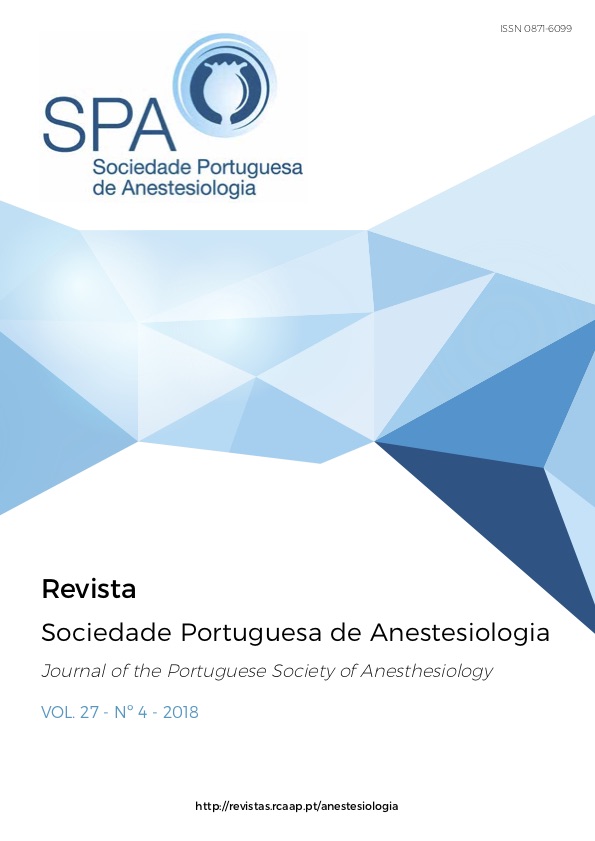Quality of Recovery in Elderly Cancer Patients
DOI:
https://doi.org/10.25751/rspa.14255Keywords:
Recovery, Quality of recovery, PQRS, Elderly, Neoplasm.Abstract
Perioperative management of the elderly is an extensively debated issue. We aimed to determine the postoperative quality of recovery in very old patients submitted to neoplastic curative surgery.
An observational, prospective study was conducted including patients undergoing curative neoplastic surgery and admitted to the PACU. The Revised Cardiac Risk Index (RCRI) was applied. Very old patients (VOP) were considered for patients >80 years old. Vulnerability was evaluated using the Clinical Frailty Scale. Frailty was defined as a score≥4. The WHODAS 2.0 was used to assess preoperative disability, which was defined as a score≥25%. EuroQol5 dimensions (EQ-5D) was used to measure quality of life before surgery. The Postoperative Quality of Recovery Scale was used at baseline (up to 14 days before surgery) and after surgery at minute 15, 40 and days 1 and 3, evaluating recovery in several domains. Recovery was defined as return to baseline values in each domain (physiologic, nociceptive, emotional, functional and cognitive). The Mann-Whitney, Chi-square or Fisher’s exact test were used for comparison.
Of 148 patients, 12% were VOP, who had higher ASA physical status (p=0.002) and higher RCRI scores (p<0.001).VOP presented more problems at mobility (p=0.005), self-care (p=0.002) and usual activities (p=0.004), with the majority presenting frailty (p=0.032) and disability (p=0.007). Recovery was similar at all time points in every domain, except in the nociceptive domain at day 1 (p=0.042).
VOP had higher RCRI scores and presented more often with frailty, disability and limitations in EQ-5D. Nonetheless, in this study, they presented complete recovery with a frequency comparable to the other patients.
Downloads
Downloads
Published
How to Cite
Issue
Section
License
Articles are freely available to be read, downloaded and shared from the time of publication.
The RSPA reserves the right to commercialize the article as an integral part of the journal (in the preparation of reprints, for example). The author should accompany the submission letter with a declaration of copyright transfer for commercial purposes.
Articles are published under the terms of the Creative Commons Attribution Non-Commercial License (CC BY-NC).
After publication in RSPA, authors are allowed to make their articles available in repositories of their home institutions, as long as they always mention where they were published.


